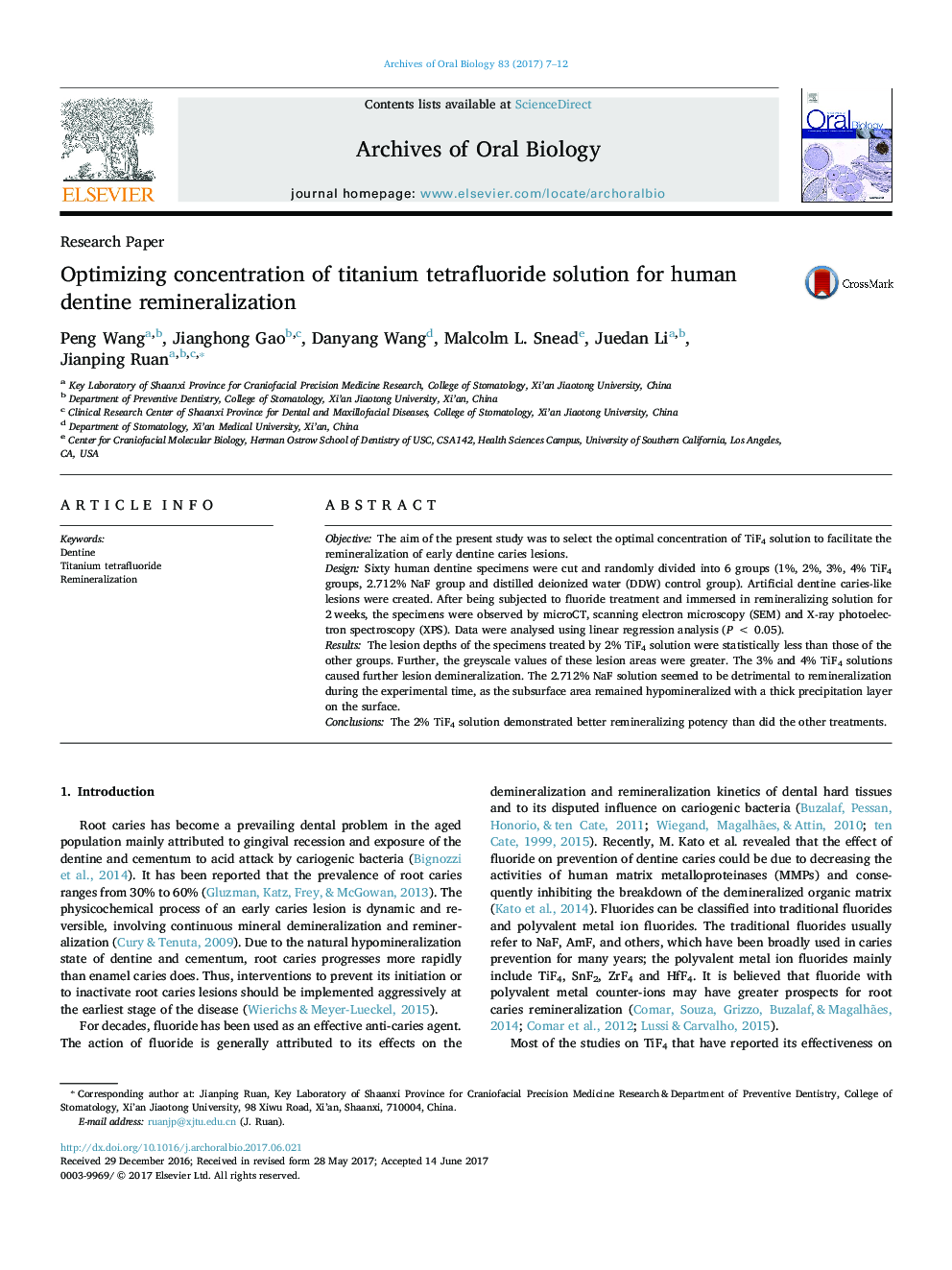| Article ID | Journal | Published Year | Pages | File Type |
|---|---|---|---|---|
| 5637841 | Archives of Oral Biology | 2017 | 6 Pages |
â¢2% TiF4 solution showed better remineralizing potency than the other treatments.â¢2.712% NaF solution was detrimental to remineralization due to thick precipitation.â¢The 3% and 4% TiF4 solutions caused further demineralization of the lesions.
ObjectiveThe aim of the present study was to select the optimal concentration of TiF4 solution to facilitate the remineralization of early dentine caries lesions.DesignSixty human dentine specimens were cut and randomly divided into 6 groups (1%, 2%, 3%, 4% TiF4 groups, 2.712% NaF group and distilled deionized water (DDW) control group). Artificial dentine caries-like lesions were created. After being subjected to fluoride treatment and immersed in remineralizing solution for 2Â weeks, the specimens were observed by microCT, scanning electron microscopy (SEM) and X-ray photoelectron spectroscopy (XPS). Data were analysed using linear regression analysis (PÂ <Â 0.05).ResultsThe lesion depths of the specimens treated by 2% TiF4 solution were statistically less than those of the other groups. Further, the greyscale values of these lesion areas were greater. The 3% and 4% TiF4 solutions caused further lesion demineralization. The 2.712% NaF solution seemed to be detrimental to remineralization during the experimental time, as the subsurface area remained hypomineralized with a thick precipitation layer on the surface.ConclusionsThe 2% TiF4 solution demonstrated better remineralizing potency than did the other treatments.
